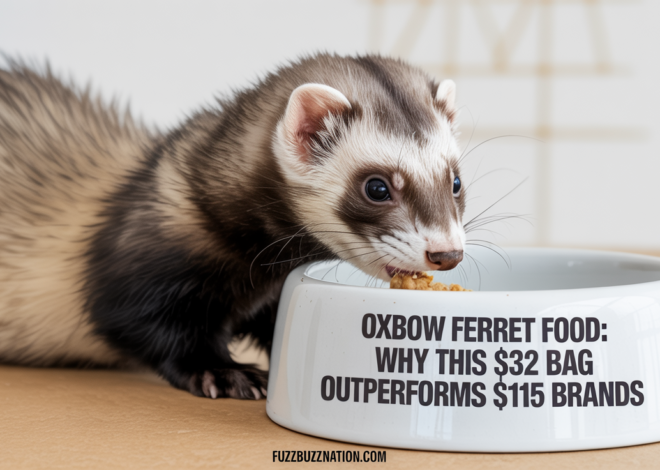
3 Vet-Approved Homemade Dog Food Recipes (Safe for Puppies & Adults)
Updated January 2025 | Reviewed by veterinary professionals
New Year, new nutrition goals—and yes, that includes your four-legged family member too! If you’re ready to ditch the mystery ingredients in commercial dog food and start cooking for your pup, you’ve come to the right place. These vet-approved homemade dog food recipes aren’t just safe for adult dogs—they’re also puppy-friendly when prepared correctly.
But before we dive into the kitchen, let’s talk real talk about homemade dog food…
Is Homemade Dog Food Actually Safe for Dogs and Puppies?
Here’s the honest answer: It depends entirely on execution.
I’ve been researching and testing homemade dog food recipes for over three years now, and I’ve seen both incredible success stories and concerning nutritional disasters. The difference? Following vet-approved recipes to the letter versus “winging it” with random ingredients.
The statistics are pretty eye-opening:
- 84% of homemade dog food diets were missing three or more essential nutrients (2019 veterinary study)
- 95% of DIY recipes fell short in at least one critical nutritional area (2013 research)
- 70% of pet owners skip crucial ingredients like oils and supplements
- Over 25% don’t use vitamin/mineral supplements at all
But here’s what those studies don’t tell you: when done correctly with proper recipes, homemade dog food can be exceptional for both adult dogs and growing puppies.
The Puppy Factor: Special Considerations
Can puppies eat homemade dog food? Absolutely—but with important modifications. Puppies under 12 months need:
- 22.5% minimum protein (vs. 18% for adults)
- Higher calorie density for rapid growth
- Specific calcium-to-phosphorus ratios for bone development
- More frequent meals (3-4 times daily vs. 2 for adults)
Always consult your veterinarian before transitioning any puppy under 12 months to homemade food.
What Dogs (and Puppies) Actually Need Nutritionally
Whether you’re feeding a 8-week-old puppy or a 8-year-old senior, every meal needs these core components:
Protein (22.5% for puppies, 18% for adults)
- Builds muscle, organs, and immune system
- Sources: lean meats, eggs, fish, organ meats
Healthy Fats (8.5% for puppies, 5.5% for adults)
- Brain development, coat health, energy
- Sources: fish oil, flaxseed oil, chicken fat
Complex Carbohydrates
- Sustained energy, digestive health
- Sources: brown rice, sweet potatoes, oats
Essential Vitamins & Minerals
- Bone development, immune function
- Sources: supplements, organ meats, vegetables
The non-negotiable truth? You cannot “eyeball” these ratios. Precision matters, especially for growing puppies.
Recipe #1: Dr. Treat’s Basic Nutritional Formula
Suitable for adult dogs and puppies over 12 weeks
This recipe comes from Green Mountain Veterinary Hospital, where Dr. Treat has been feeding this to his own dogs for over three years with excellent results.
Ingredients:
- 2 cups cooked brown rice
- 1/3 cup fatty meat (ground beef with fat or dark meat chicken)
- 1/3 cup lean meat (or substitute with 1/2 cup lean meat + 2 tbsp healthy oil)
- 1/4 cup grated vegetables (carrots, green beans, zucchini)
- Veterinary-approved vitamin/mineral supplement (non-negotiable)
Instructions:
- Cook brown rice according to package directions (I prefer to make it slightly softer for better digestibility)
- Steam or lightly cook the meats until fully cooked through
- Steam vegetables until tender—puppies especially need softer textures
- Mix all ingredients thoroughly while still warm
- Add supplements as directed by your veterinarian
Yields: Approximately 3 cups Storage: Refrigerate up to 5 days, freeze up to 3 months
Puppy Modifications:
- Under 6 months: Add an extra tablespoon of healthy oil for higher calories
- Teething puppies: Mash vegetables completely or puree for easier eating
- Portion sizing: Feed 2-3 times the amount per pound of body weight compared to adult dogs
Recipe #2: Vegetarian Power Bowl with Eggs and Tofu
Complete protein option safe for dogs and puppies
Don’t let the “vegetarian” label fool you—this recipe provides complete proteins and often appeals to dogs with meat sensitivities.
Ingredients:
- 2½ oz firm tofu (or 1/4 cup cooked soy grits)
- 2 large eggs (excellent for growing puppies)
- 2 tablespoons nutritional yeast (B-vitamin powerhouse)
- 1/2 teaspoon cold-pressed oil (flax or fish oil)
- 2 cups cooked brown rice
- 1/2 cup chopped vegetables (zucchini, carrots, spinach)
- Complete vitamin/mineral supplement
Instructions:
- Scramble tofu and eggs together with oil and nutritional yeast
- Cook until eggs are fully set and tofu is heated through
- Steam vegetables until soft (especially important for puppies)
- Combine with cooled brown rice
- Mix in supplements thoroughly
Yields: About 3⅓ cups Pro tip: The nutritional yeast adds a naturally cheesy flavor that most dogs love!
For Puppies:
- Extra nutrition boost: Add 1 tablespoon of plain Greek yogurt for probiotics
- Texture adjustment: Mash or food process for very young puppies
- Protein verification: This recipe provides complete amino acid profiles essential for puppy growth
Recipe #3: Dr. Judy’s Nutrient-Dense Puploaf
The premium option for maximum nutrition
This recipe comes from holistic veterinarian Dr. Judy and represents the gold standard of homemade dog nutrition. Yes, it requires more ingredients, but the nutritional payoff is incredible.
Ingredients:
- 2 lbs grass-fed ground beef
- 1 cup chicken hearts (organ meat is crucial for puppies)
- 2 cans sardines in water (omega-3 powerhouse)
- 2 cans mussels in olive oil
- 3 whole eggs with shells (if farm-fresh; otherwise just use egg membrane)
- 1 cup butternut squash, chopped
- 1 cup broccoli, finely chopped
- 2 bell peppers, seeded and chopped
- Handful of dark leafy greens
- 1 teaspoon freshly grated ginger
- 1/2 cup unsweetened dried cranberries (urinary tract support)
- Cold-pressed flax oil for serving
Instructions:
- Preheat oven to 325°F
- Mix all ingredients except flax oil in a large bowl (food processor helps!)
- Pack mixture into baking dish
- Bake 20-30 minutes until cooked through
- Cool completely before serving
- Drizzle with flax oil just before serving
Yields: About 8-10 cups (perfect for meal prep) Storage: Refrigerate 5 days, freeze individual portions up to 4 months
Puppy Adaptations:
- Organ meat benefits: Essential for rapid development and immune system building
- Omega-3 importance: Critical for brain and eye development in growing puppies
- Serving size: Start with smaller portions and gradually increase as puppy grows
Critical Safety Guidelines: No Shortcuts Allowed
After years of researching homemade dog nutrition, here are my non-negotiable rules:
Before You Start:
- Veterinary consultation is mandatory—especially for puppies under 6 months
- Get a complete health panel to identify any nutritional needs
- Discuss transition timeline—usually 7-10 days minimum
During Preparation:
- Measure everything precisely—no “eyeballing” allowed
- Use supplements religiously—they’re not optional
- No ingredient substitutions without veterinary approval
- Maintain strict food safety standards
Ongoing Monitoring:
- Regular vet checkups to monitor health markers
- Weight monitoring—especially crucial for growing puppies
- Watch for any digestive upset or behavioral changes
Puppy-Specific Feeding Guidelines
Age-Based Feeding Schedule:
- 8-12 weeks: 4 meals daily, softer textures
- 3-6 months: 3 meals daily, normal texture
- 6-12 months: 2-3 meals daily, adult portions
- 12+ months: Transition to adult feeding schedule
Portion Calculations:
- Puppies: 2-3% of current body weight daily (divided into multiple meals)
- Adult dogs: 2-2.5% of ideal body weight daily
- Active/working dogs: Up to 3% of body weight daily
Warning Signs to Watch For:
- Excessive weight gain or loss
- Digestive upset lasting more than 24 hours
- Changes in energy levels
- Dental or developmental issues
Frequently Asked Questions
Can I feed these recipes to my puppy?
Yes, all three recipes are safe for puppies over 8 weeks when prepared correctly and with proper veterinary guidance. Puppies may need texture modifications and different portion sizes.
How do I transition from commercial food to homemade?
Gradually over 7-10 days: Start with 25% homemade/75% commercial, then 50/50, then 75/25, finally 100% homemade. Puppies may need a slower transition.
What supplements are absolutely necessary?
A complete vitamin/mineral supplement designed for homemade dog food is non-negotiable. Brands like Balance IT or similar veterinary-recommended supplements ensure complete nutrition.
How much should I feed my puppy vs. adult dog?
Puppies need 2-3 times more calories per pound of body weight than adult dogs. Always consult feeding charts and your veterinarian for specific guidance.
Can I make these recipes in bulk?
Absolutely! All recipes freeze well. I recommend making large batches and freezing in single-meal portions for convenience.
What if my dog has allergies or health conditions?
These recipes may need modifications. Always work with your veterinarian or a board-certified veterinary nutritionist for customized recipes.
Professional Resources for Homemade Dog Food
For recipe customization and nutritional analysis, I highly recommend:
- Balance.it – Creates custom recipes with proper supplementation
- Board-certified veterinary nutritionists – For complex health conditions
- Your veterinarian – For ongoing monitoring and adjustments
The Bottom Line on Homemade Dog Food
Making homemade food for your dog or puppy can be incredibly rewarding when done correctly. You’ll know exactly what goes into every meal, and many dogs show improved energy, coat quality, and overall health.
But remember: this isn’t about being a gourmet chef. It’s about being a responsible pet parent who follows proven, veterinary-approved recipes without taking shortcuts.
Whether you’re feeding a growing puppy or a senior dog, precision and consistency are your best friends. Measure carefully, supplement properly, and always keep your veterinarian in the loop.
Your dog’s health isn’t something to improvise—but with these vet-approved recipes, you’re giving them nutrition they’ll thrive on for years to come.


